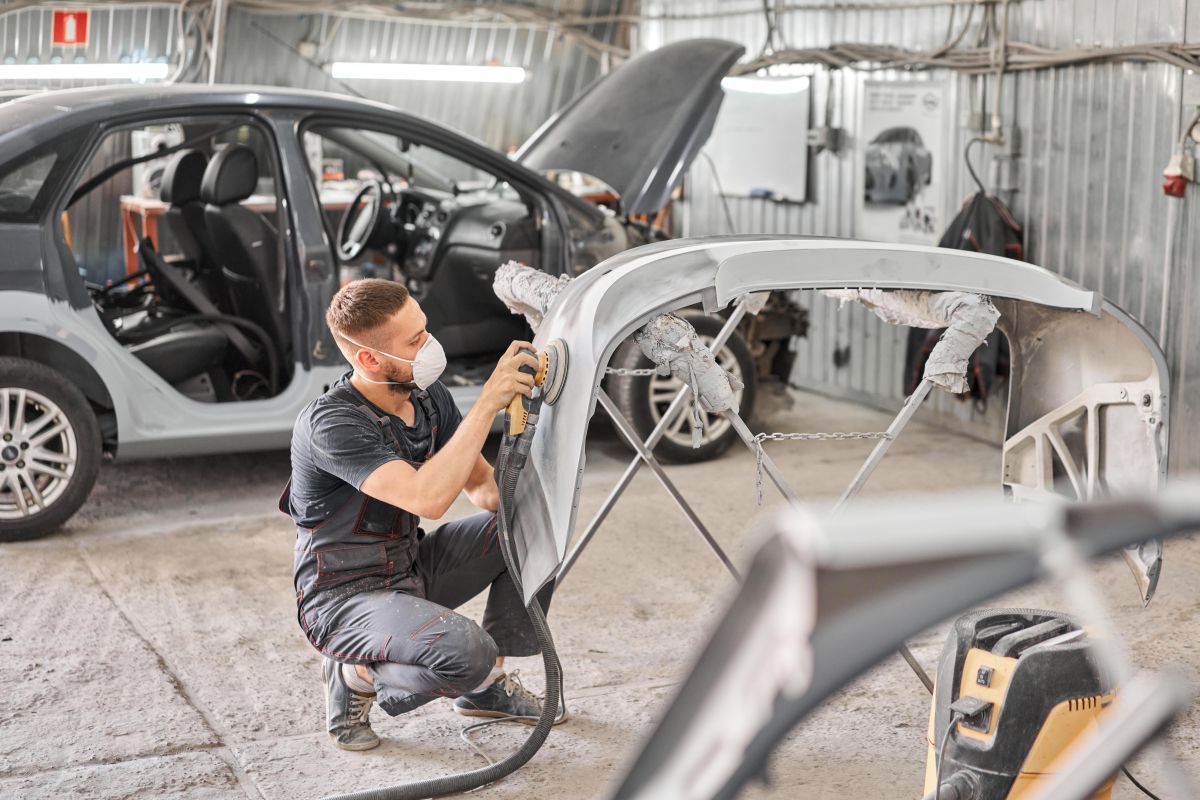Creating a culture of safety in a collision repair shop by implementing tools and strategies can protect employees while improving operations.
Stephany Birkholz, regulatory project manager with KPA, which provides Environmental Health and Safety Compliance software for the automotive space, helps clients in the collision repair industry, appeared on The Collision Vision podcast, hosted by Cole Strandberg and driven by Autobody News, to explore steps shop owners can take to build safer workplaces and ensure long term compliance.
Workplace Safety in Collision Repair
Current regulatory pressure and activity in the collision repair industry is focused on “total worker health” in the wake of the COVID pandemic, Birkholz said.
When working with clients who own collision repair shops, Birkholz said she looks at available personal protective equipment (PPE) -- which also includes proper training on how and when to use it -- housekeeping, air quality and tools and equipment.
By “housekeeping,” Birkholz said she means how neatly things are stored.
“You always have that one guy who has never thrown a screw away,” she said. “He's got all those boxes of screws under his workbench, where you have to do aerobics just to get through their work area. Looking at housekeeping and just the likelihood of somebody having a slip, trip and fall, or equipment come toppling down on them.”
OSHA compliance is an important factor, but not the most important, Birkholz said.
“I think the most important component for the owners is, ‘Am I committed to providing a culture of safety within my organization?’” she said. “What's important to the managers is what's important to the owner. So if workplace safety is important to that owner, then that becomes important to the manager, which then becomes personally important to the employee.”
That means creating a culture where a manager has the authority to order PPE, or an employee feels they can speak up if they have a safety concern.
The first step toward that goal is to do a needs analysis, using OSHA and EPA regulations as a framework, which dictate, based on industry, if a business needs an injury and illness prevention plan, hazard communication program, lockout/tagout program or fire suppression plan.
“I like to use this analogy: if my refrigerator broke, I would probably not spend 10 hours on YouTube researching how to replace a compressor,” Birkholz said. “I'm going to call the guy who's been doing this for 30 years.”
Similarly, collision shop owners can call a company like KPA to help achieve compliance.
KPA can help clients establish a safety committee within their organization, and then help the committee stay on track with what need to be addressed. “These are going to be things like accident investigations, root cause analysis, reviews of near misses, identified issues, training,” Birkholz said.
She suggested getting employees involved as much as possible in identifying issues, as they may have different perspectives, and doing so gives them a sense of ownership.
“I think that recognizing your high-potential employees and giving them an avenue to learn a little bit more, like having them complete a self inspection…and just giving them that power to bring things to the table that might be outside of their normal job duties, that elevates their workplace experience,” Birkholz said.
KPA uses a software platform called Vera Suite to help businesses stay in compliance and continue to improve. It also offers a mobile app. The tools can track inspections, training and permits.
Real Life Examples
Birkholz said one client adopted a program providing all new employees at orientation with training on company policies related to first aid and environmental health and safety.
“They implemented that and their incident rates went down, and after a couple of years, their [workman’s comp] rates were significantly reduced,” she said. The client showed her a rebate check he’d received from his insurance company, which was more than what he was paying KPA for their services.
That is one example of how implementing safety policies can provide a strong return on investment -- no matter the size of the business.
“We work with many of what we would call the mom-and-pops, a single store, and we work with dealer groups that have 200, 300 locations across the entire nation,” Birkholz said.
OSHA regulations apply to all shops, she said. “The only time where you have some exemptions from OSHA is if you have 10 or fewer employees.”
Key Regulations to Watch
Birkholz said a federal standard for heat illness prevention will go into effect sometime in 2025. The rule covers indoor and outdoor workplaces where the heat index reaches 80 degrees Fahrenheit or higher. Public comments are still being accepted until Dec. 30.
Workplace violence prevention plans, which have already been adopted at the state level in New York and California, could also be coming at a federal level.
But already in place are federal standards requiring all collision shops to have an injury and prevention program. “That is the parent program of everything,” Birkholz said.
“If someone gets hurt, here's what we're going to do. If someone wants to report something, here's how they can report it. Employee suggestions or near misses, injuries. It outlines the company's commitment to workplace safety and how they're going to do it,” she said.
Coming off that are subprograms like plans for emergency responses; hazard communications, which include safety data sheets; and workplace hazard assessments.
The Future of Safety in Collision Shops
Birkholz said the collision repair industry got its first taste of how new materials and technology could change safety protocols with aluminum.
“Everyone had to go out and buy their curtains for aluminum work, and get a giant yellow fire extinguisher for combustible metals,” she said.
The next taste is EVs, which is where lockout/tagout and energy control programs come into play. There are OEM recommendations on handling their own EVs, but no federal standards.
“There are a lot of considerations,” Birkholz said.














Abby Andrews